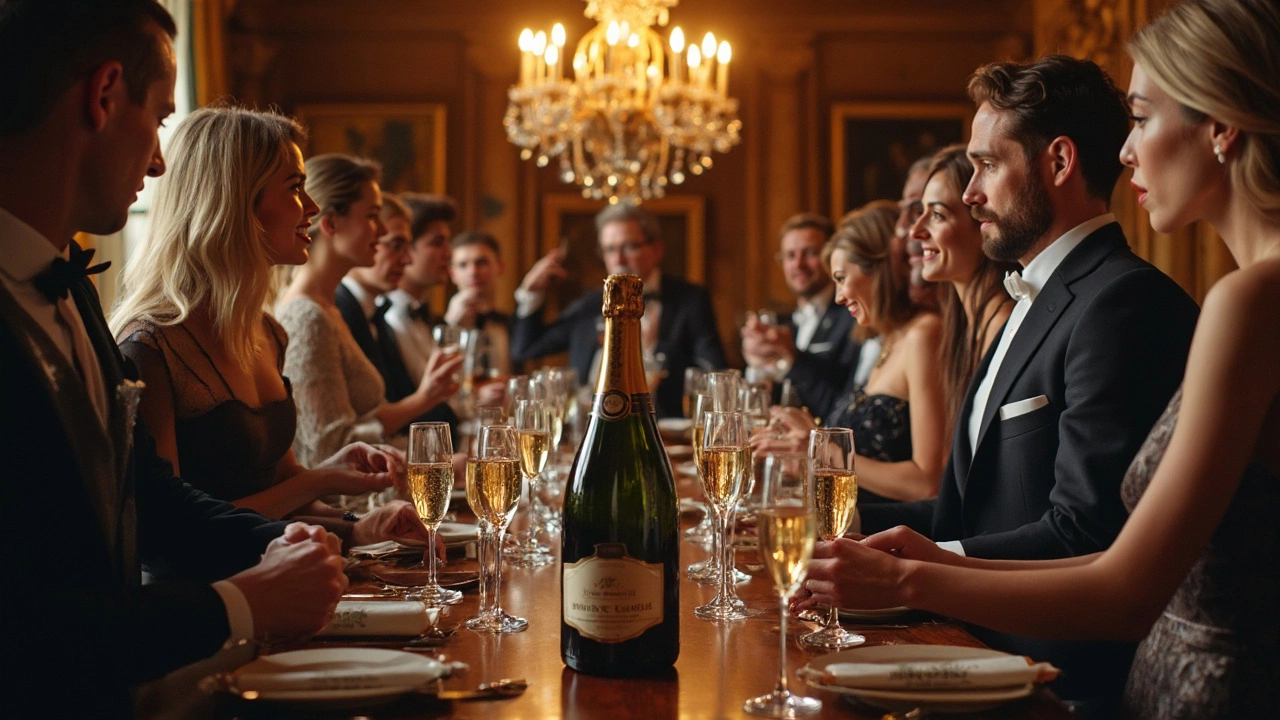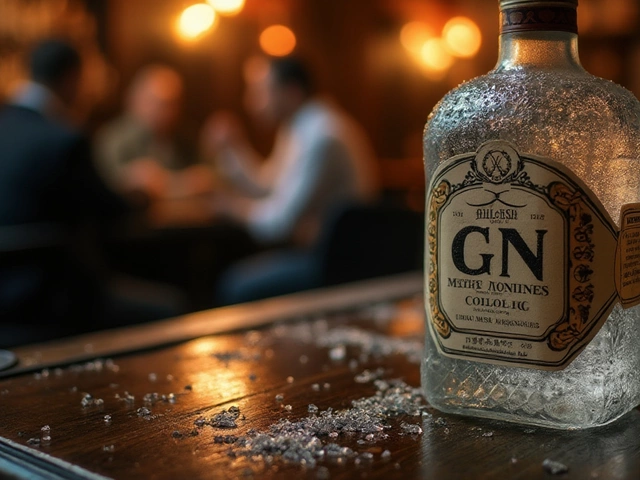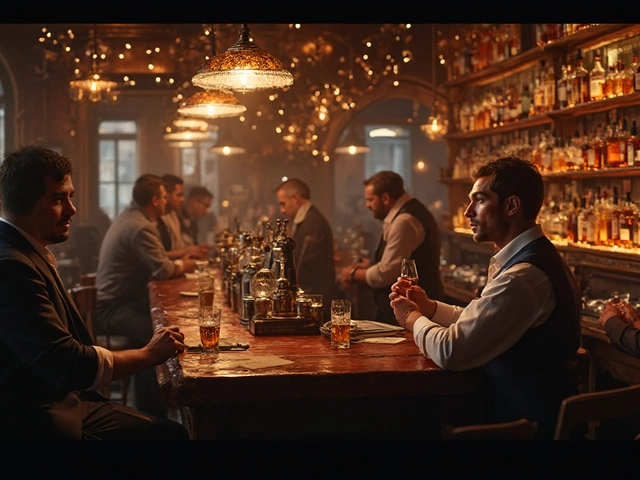Champagne – it's not just a drink; it's a statement. You might wonder, is drinking champagne inherently classy, or is it just a sparkling wine with a fancy name? Well, let's unravel this fizzy mystery.
First off, champagne hails from a very specific region in France called, you guessed it, Champagne. This isn't just a marketing strategy; it’s an essential part of what makes champagne special. The region's unique climate and soil conditions cultivate the distinct taste you experience with every sip. Nothing else quite compares.
Now, you might ask, what really sets champagne apart from the myriad of sparkling wines out there? The secret lies in its creation process. Traditional methods, sometimes referred to as 'Méthode Champenoise,' involve secondary fermentation in the bottle. This isn't a simple walk in the park – it's an artful and labor-intensive process that gives champagne its signature bubbles and rich profile.
- The History and Prestige of Champagne
- What Makes Champagne Unique
- How to Properly Taste Champagne
- Common Misconceptions About Classiness
- Tips for Hosting a Champagne Tasting
The History and Prestige of Champagne
When we talk about champagne, there’s a whole world of history fizzing behind those bubbles. Picture this: the story begins all the way back in the 17th century in the Champagne region of France. Known for its chalky soil and cool climate, it can take most of the credit for the unique flavor profile that catapulted champagne into the big leagues of classy drinks.
Legend says Dom Pérignon, a Benedictine monk, played an important role in perfecting the art of champagne-making. While he didn't actually invent it, his contributions to improving production techniques and controlling the bubbles are noteworthy. Imagine monks in a quiet abbey, quietly focusing on making the perfect bubbly drink. That right there is dedication to the craft.
Fast forward a couple of centuries, and you’ll find champagne ingrained in the world's high society. Thanks to strategic marketing and clever distribution, by the 19th century, it had become the drink of European royalty and luxury events. Being awash in champagne was synonymous with prestige, wealth, and celebration—things people still associate with it today.
Making it to the Top
The big push into popularity was partially thanks to its early use during royal festivities and coronations. This wasn't just about taste; it was about visibility and being front and center in the limelight. As it became symbolic of celebration, many believed it to add a touch of class to any occasion.
By the 20th century, champagne solidified its place in culture. From movie stars sipping it at the Oscars to couples toasting their wedding day, champagne has earned its reputation as a staple of classy occasions.
The Numbers Game
Take a glimpse at a champagne fact: France alone produces over 300 million bottles of champagne every year, with the majority being exported worldwide. It’s a multi-billion-dollar industry, showing just how popular this bubbly delight is across the globe.
What Makes Champagne Unique
Let's get down to the fizz. What makes champagne stand out in the world of sparkling wines? Well, it’s all about where it comes from and how it's made. True champagne can only originate from the Champagne region in France, and that’s not just a snobbish rule – it’s about authenticity.
The Terroir of Champagne
The magic begins in the soil. Champagne vineyards are situated in a climate that’s cooler than most wine regions, benefiting from chalky soil that drains well and moderates temperature. This creates the perfect environment for the grapes used in champagne, predominantly Chardonnay, Pinot Noir, and Pinot Meunier.
The Method Makes the Magic
Now, onto the method – known as the 'Méthode Champenoise' or 'Traditional Method'. This process involves a meticulous double fermentation. First, wine is made in the usual way. Then, secondary fermentation occurs in the bottle, which traps carbon dioxide and creates those delightful bubbles. This step isn’t quick; bottles are aged for a minimum of 15 months, with some prestige brands letting them rest for years to develop rich, complex flavors.
Distinct Flavor Profiles
So, what does this produce? A drink that's unique with notes of brioche, apple, and citrus, thanks to the blend of grapes and yeast aging process. The key here is the balance of acidity and fruitiness with a dry finish that makes champagne perfect for toasting anything from a casual brunch to a black-tie gala.
To put it simply, champagne is not just bubbles and an elegant bottle. It's a blend of history, geography, and craftsmanship, with every sip offering a taste of something truly exceptional.
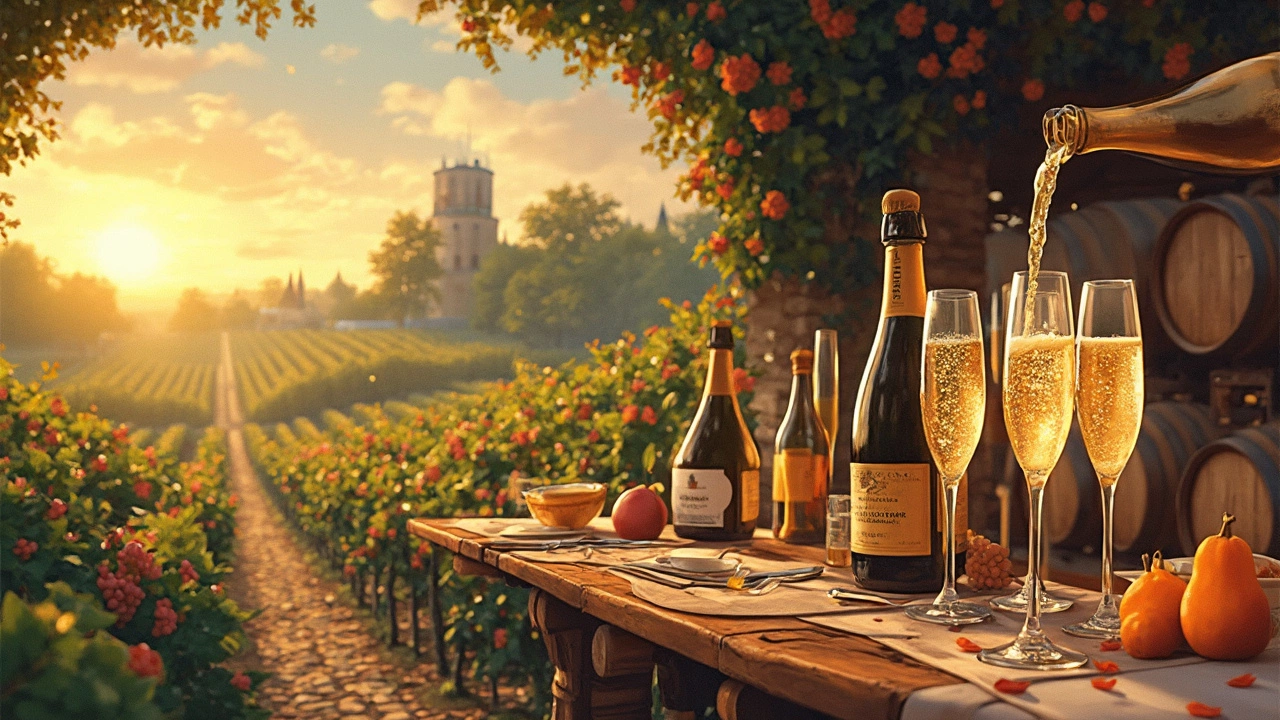
How to Properly Taste Champagne
Alright, so you've got a bottle of champagne in hand. Let's walk through how to savor it like a true connoisseur. Tasting champagne isn't just about sipping the bubbles; it's an experience that involves all your senses.
Step One: The Look
Start by pouring the champagne into a clean flute or tulip-shaped glass. This helps capture the aroma while showing off the beautiful bubbles. Hold your glass up to the light. You should see tiny, consistent streams of bubbles, which indicate quality and freshness.
Step Two: The Smell
Before taking a sip, give the champagne a gentle swirl. Now, bring the glass close to your nose and inhale deeply. What can you smell? You might pick up on fruity notes like apple or citrus, or richer aromas if it's a vintage bottle. Champagne has a lot going on and your nose will pick up more than you might expect.
Step Three: The Taste
Finally, the moment you've been waiting for. Take a small sip and let it linger in your mouth. Pay attention to the flavors. Do you taste fruitiness, nuttiness, or maybe some brioche? Notice the bubbles – they should feel lively but not too aggressive on your tongue.
Pro Tips for Tasting
- When tasting several bottles in one session, cleanse your palate with some plain bread or crackers in between.
- Consider the temperature. Ideally, champagne should be served between 8-10°C (46-50°F).
- Store your champagne in a cool, dark place, and avoid rapid temperature changes to maintain its quality.
And there you have it – the secret to tasting champagne like a pro. Next time you're at a champagne tasting event, you'll know exactly how to appreciate every bubble.
Common Misconceptions About Classiness
When it comes to champagne, people often have all sorts of ideas about what it means to be 'classy.' There are a lot of stereotypes and myths out there, so let’s clear up some of the big ones.
Expensive Equals Classy
One of the biggest misconceptions is that the price of a bottle dictates its classiness. Sure, some champagne does come with a hefty price tag, but that doesn’t automatically make it superior or classy. It's more about personal taste and how you enjoy it. In fact, there are plenty of reasonably priced champagnes that offer excellent quality. What's important is savoring each sip, not spending a fortune.
All Sparkling Wine is Champagne
This is a classic slip-up. People often use the term 'champagne' for any sparkling wine, but true champagne only comes from the Champagne region in France. Other regions have their own sparkling wines, like Prosecco from Italy or Cava from Spain, and they have unique traits worth exploring.
It Must Be Served in a Flute
While flutes are traditional, they're not a must. Wine experts sometimes prefer wider, tulip-shaped glasses, as they help keep the aroma intact and let your taste buds really explore the champagne's complexity. So don’t worry if you don’t have flutes at your next tasting.
Only for Celebrations
People think champagne is only for grand events like New Year’s or weddings. But it doesn’t have to be kept on ice for rare occasions. It's a versatile drink that can accompany a simple dinner or even a chill afternoon with friends. No need to wait for a reason to pop a bottle.
Going Overboard with Fancy Labels
Tons of folks assume that a classy champagne demands an ornate label with golden fonts. Although it can be aesthetically pleasing, what's inside counts more than fancy packaging. A minimalistic label doesn’t mean the champagne isn’t worth your time.
Ultimately, what makes drinking champagne classy is about how you enjoy it and appreciate its nuances, rather than any external status symbols.
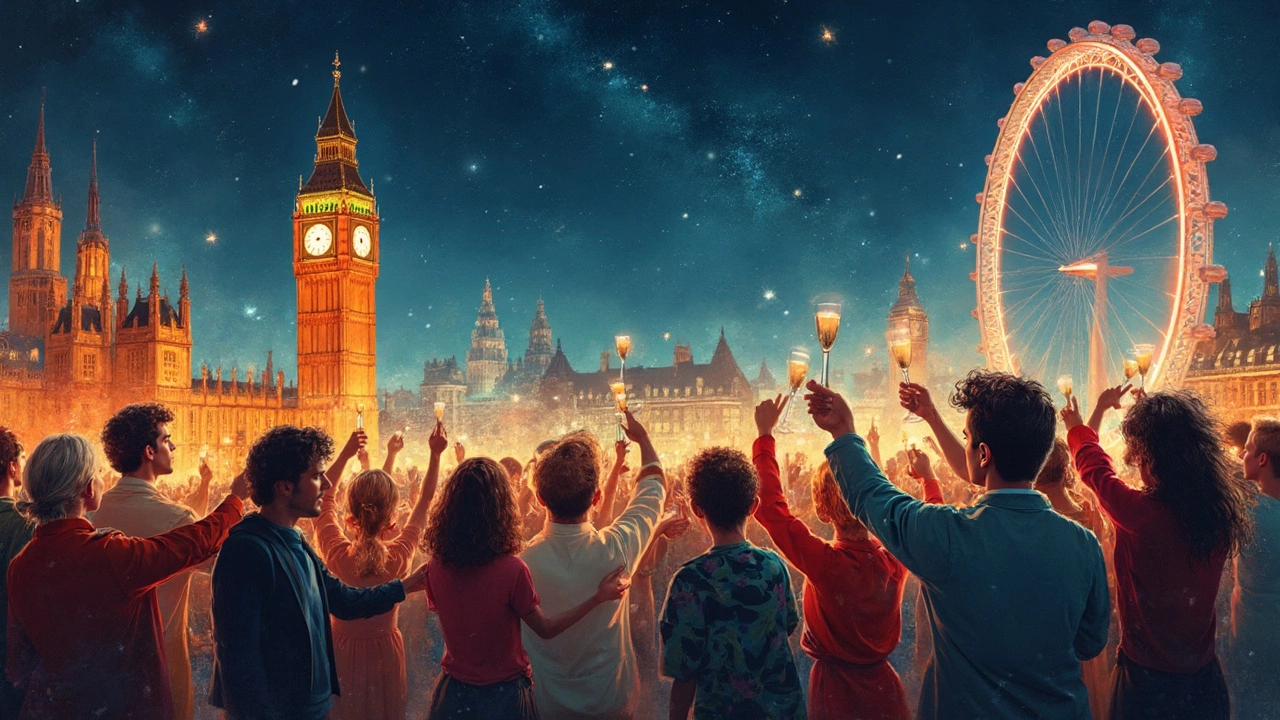
Tips for Hosting a Champagne Tasting
Hosting a champagne tasting can be a fun and fancy way to gather friends and explore different bubbly delights. But where do you start? Since it’s all about discovery and enjoyment, let's break down some steps to make your event both classy and informative.
Choose Your Selection Wisely
Start by selecting a variety of champagnes. Aim for a mix that includes both familiar favorites and some adventurous picks. Consider diverse styles such as Brut, Blanc de Blancs, and Rosé, which can showcase the range of flavors champagne has to offer.
Set the Scene
A simple yet elegant setting is key. Use clean, crisp glasses — preferably flute or tulip-shaped, which help capture the aromas and bubbles. Provide spittoons or small buckets if guests wish to taste rather than drink. A clean, uncluttered table makes for a nice presentation.
Pair with Palate-Cleansers
Offer light refreshments that don’t overpower the champagne. Water crackers, a selection of mild cheeses, or even fresh fruit like strawberries can keep taste buds refreshed and ready for the next sip.
Guide the Tasting
Kick things off with a brief overview of each champagne. Talk about where they come from and what makes each unique. Encourage guests to observe the color, take in the aroma, and note the taste. Is it citrusy or more earthy? Discussions can be enlightening!
Wrap It Up with a Toast
Conclude the tasting with a toast. Acknowledge everyone's favorite picks and maybe even vote on the 'top drop' of the night. It adds a fun closing moment and leaves guests with good vibes.
| Style | Description |
|---|---|
| Brut | Dry with less than 12 grams of sugar |
| Blanc de Blancs | Made exclusively from Chardonnay grapes |
| Rosé | Blended with red wine for a pink hue |
Remember, the goal is to have fun and learn something new, whether it’s about the champagne itself or each other’s preferences. Cheers!
